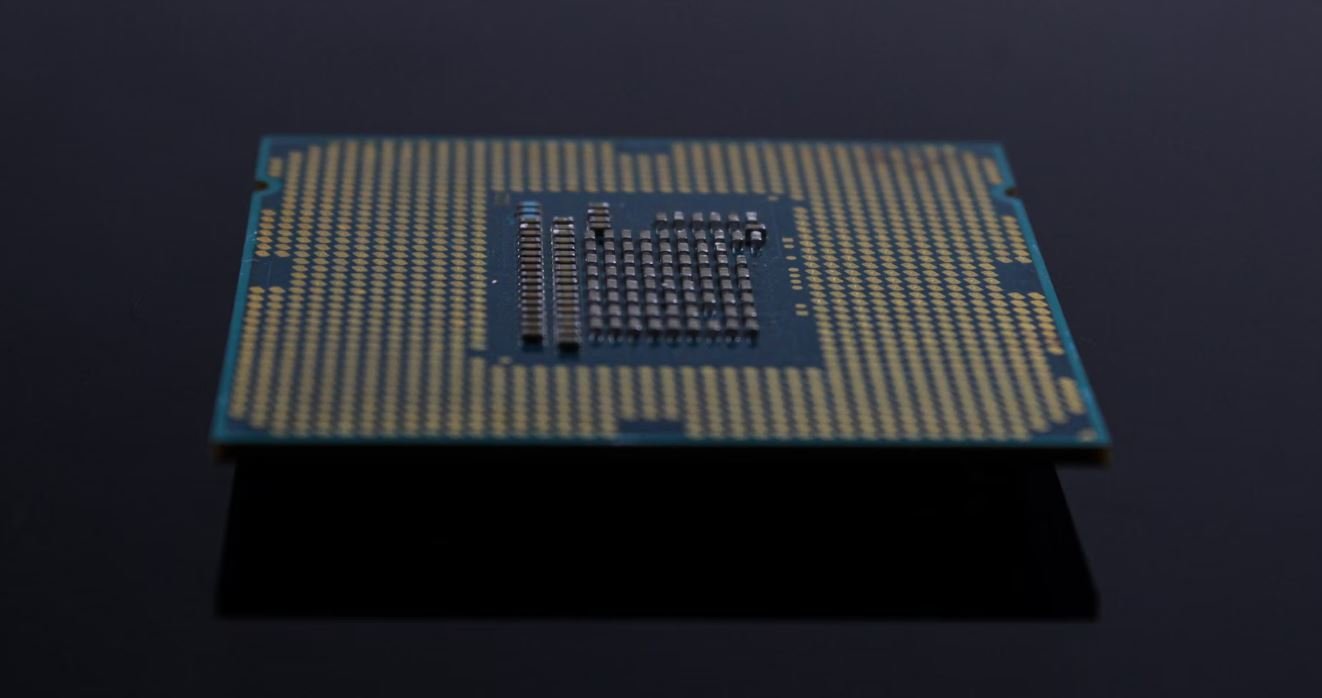SpaceX Location
SpaceX, also known as Space Exploration Technologies Corp., is an American aerospace manufacturer and space transportation company founded by Elon Musk in 2002. With its ambitious goal of colonizing Mars, SpaceX has become a leading player in the space industry. One critical aspect of SpaceX’s operations is its choice of location for key facilities and launch sites.
Key Takeaways:
- SpaceX strategically selects its locations for facilities and launch sites.
- Facilities and launch sites are chosen based on factors such as proximity to customers, favorable weather conditions, and access to necessary infrastructure.
- SpaceX operates several key facilities and launch sites across the United States.
Facilities and Launch Sites
SpaceX operates multiple facilities and launch sites strategically positioned across the United States. These locations are chosen considering various factors that are crucial for successful space operations.
- Headquarters in Hawthorne, California: SpaceX’s headquarters is located in Hawthorne, California. The primary purpose of this facility is research, development, and manufacturing.
- Launch Sites: SpaceX operates two major launch sites, namely Cape Canaveral Space Force Station in Florida and Vandenberg Space Force Base in California. These sites are used for launching various SpaceX rockets into space.
- Texas Facilities: SpaceX has established a significant presence in Texas, with facilities such as the Starship Development and Launch Facility in Boca Chica and a Rocket Development and Test Facility in McGregor.
Mission Control Center and Tracking Stations
In addition to its facilities and launch sites, SpaceX operates a mission control center and tracking stations to support its space missions.
- Mission Control Center in Hawthorne: SpaceX’s mission control center, located at its headquarters in Hawthorne, California, serves as the command center for monitoring and controlling its space missions.
- SpaceX’s mission control center is akin to NASA’s mission control in Houston.
- Tracking Stations: SpaceX also operates a network of tracking stations around the globe to ensure continuous communication with its spacecraft during launches and missions.
| Launch Site | Location | Approximate Distance from Equator (in kilometers) |
|---|---|---|
| Cape Canaveral Space Force Station | Florida, USA | 28.5 |
| Vandenberg Space Force Base | California, USA | 34.7 |
| Facility | Location | Main Purpose |
|---|---|---|
| Starship Development and Launch Facility | Boca Chica, Texas | Testing and launching Starship spacecraft |
| Rocket Development and Test Facility | McGregor, Texas | Rocket engine testing and development |
| Tracking Station | Location |
|---|---|
| Bermuda Tracking Station | Bermuda |
| Hawaii Tracking Station | Hawaii, USA |
| Johnston Island Tracking Station | Johnston Atoll |
Conclusion
SpaceX’s choice of location for its facilities and launch sites plays a crucial role in its operations. By strategically selecting these locations, SpaceX can optimize its ability to manufacture, launch, and control missions efficiently.

Common Misconceptions
Paragraph 1: Privatization of Space Travel
One common misconception about SpaceX is that it is the only company involved in the privatization of space travel. While SpaceX has gained significant attention and success in this field, there are actually several other companies that are also contributing to the commercialization of space travel. These companies include Blue Origin, Virgin Galactic, and Boeing.
- SpaceX is not the only company involved in privatizing space travel
- Blue Origin and Virgin Galactic are also competing in this field
- Boeing is another major player in commercial space travel
Paragraph 2: Mars Colonization
Another misconception is that SpaceX is solely focused on colonizing Mars. While Elon Musk, the CEO of SpaceX, has made ambitious plans for Mars colonization, the company has a broader goal of enabling humans to become a space-faring species and eventually colonize other planets as well. SpaceX’s long-term vision includes establishing a sustainable presence on Mars, but it also aims to support exploration and travel to other destinations within our solar system.
- SpaceX has broader goals beyond Mars colonization
- Enabling humans to explore and colonize other planets is part of their vision
- Supporting exploration within our solar system is a key objective
Paragraph 3: NASA Collaboration
A common misconception is that SpaceX is a competitor to NASA. While both organizations are involved in space exploration, they actually have a collaborative relationship. SpaceX has been working closely with NASA through partnerships and contracts to provide crew and cargo transportation to the International Space Station (ISS). NASA relies on SpaceX and other commercial partners to reduce their costs and focus on more ambitious objectives.
- SpaceX and NASA have a collaborative relationship
- SpaceX provides transportation services to the ISS for NASA
- Partnerships with commercial companies help NASA achieve ambitious goals
Paragraph 4: Reusability of Rockets
Many individuals assume that reusable rockets are a new concept introduced by SpaceX. However, the idea of reusability has been explored by other organizations in the past. SpaceX has undoubtedly made significant progress in this area with its Falcon 9 and Falcon Heavy rockets, revolutionizing the space industry by successfully landing and reusing a significant number of boosters. However, reusable rockets have been in development and experimentation for many years before SpaceX’s achievements.
- SpaceX is not the first to explore the concept of reusable rockets
- Other organizations have experimented with reusability in the past
- SpaceX has made remarkable progress in landing and reusing boosters
Paragraph 5: Space Tourism Accessibility
Another common misconception is that space tourism will only be accessible to the ultra-wealthy. While ticket prices for space tourism offered by companies like SpaceX might initially be out of reach for the average person, the long-term goal of these companies is to make space travel more affordable and accessible to wider audiences. As technology advances and costs decrease, it is anticipated that space tourism will become more affordable in the future.
- Space tourism is not only for the ultra-wealthy
- Companies like SpaceX aim to make it more accessible in the future
- Advancements in technology will contribute to cost reduction and accessibility

The Rise of SpaceX: Creating a New Era of Space Exploration
SpaceX, founded by visionary entrepreneur Elon Musk, has revolutionized the space industry with its daring missions, technological breakthroughs, and ambitious plans for the future. From its humble beginnings, SpaceX has rapidly grown into a major player in the aerospace sector, with numerous achievements and milestones along the way. In this article, we explore some fascinating aspects of SpaceX’s journey through a series of captivating tables.
1. SpaceX Orbital Launches by Year (2010-2021)
This table showcases the annual total of SpaceX’s successful orbital launches since its first launch in 2010. It highlights the company’s consistent growth in achieving orbit in increasingly higher numbers over the years.
| Year | Orbital Launches |
|---|---|
| 2010 | 0 |
| 2011 | 2 |
| 2012 | 2 |
| 2013 | 3 |
| 2014 | 6 |
| 2015 | 7 |
| 2016 | 8 |
| 2017 | 18 |
| 2018 | 21 |
| 2019 | 13 |
| 2020 | 26 |
| 2021 | 36 (thus far) |
2. SpaceX Rockets Currently in Operation
This table provides information about the various rocket families SpaceX has developed and currently operates, showcasing the unique capabilities and specifications of each.
| Rocket Family | Operational Status | Payload Capacity to Low Earth Orbit (LEO) | First Stage Reusability |
|---|---|---|---|
| Falcon 1 | Retired | 450 kg | No |
| Falcon 9 | Active | 22,800 kg | Yes (most missions) |
| Falcon Heavy | Active | 63,800 kg | Yes (most missions) |
| Starship | In development | Over 100,000 kg | Yes (fully reusable) |
3. SpaceX Astronaut Missions to the International Space Station (ISS)
This table provides a summary of all SpaceX missions to the International Space Station, including the astronauts onboard and the duration of each mission. It underscores SpaceX’s crucial role in NASA’s Commercial Crew Program and their commitment to human space exploration.
| Mission Name | Astronauts | Mission Duration |
|---|---|---|
| SpaceX Demo-2 (Crew Dragon) | Robert Behnken Douglas Hurley |
64 days |
| SpaceX Crew-1 (Crew Dragon) | Michael Hopkins Victor Glover Shannon Walker Soichi Noguchi (JAXA) |
Ongoing |
4. Starlink: SpaceX’s Global Internet Constellation
This table highlights important details about SpaceX’s Starlink project, which aims to provide global broadband internet coverage through a vast network of satellites.
| Total Satellites Launched | Current Active Satellites | Anticipated Total Satellites | Expected Speed (Mbps) |
|---|---|---|---|
| 1,737 | 1,465 | 42,000+ | 100+ |
5. SpaceX’s Mars Missions – Starship Development Timeline
This table outlines different stages of SpaceX’s Starship development, including crucial milestones and targets aimed at enabling human colonization of Mars.
| Stage | Description |
|---|---|
| Starship Prototype SN8 | First high-altitude flight test |
| Planetary Orbital Launch | Starship orbital launch around Earth |
| First Moon Mission | Unmanned mission around the Moon |
| Mars Transit | First crewed mission to Mars |
| Mars Base Alpha | Establishment of a self-sustaining colony on Mars |
6. Reusable Rockets vs. Traditional Rockets
This table compares the advantages of SpaceX’s reusable rockets over traditional expendable launch systems, highlighting cost-saving benefits and increased access to space.
| Aspect | Reusable Rockets | Traditional Rockets |
|---|---|---|
| Launch Cost (estimated) | $2-5 million | $50-450 million |
| Launch Frequency | Frequent (every few weeks) | Infrequent (months/years) |
| Payload Capacity | Significant | Significant |
| First Stage Recovery | Yes (vertical landing) | No (destruction) |
7. SpaceX’s Crew Dragon vs. Space Shuttle
This table presents a comparison between SpaceX’s Crew Dragon spacecraft and NASA’s retired Space Shuttle, highlighting the advancements in safety, versatility, and cost incurred by the Commercial Crew Program.
| Aspect | SpaceX Crew Dragon | Space Shuttle |
|---|---|---|
| Launch Abort Capability | Yes (powered escape system) | No (ejector seats only) |
| Landing | Land-based | Runway-based |
| Launch Pad Accessibility | Various (multiple launch sites) | Kennedy Space Center |
| Cost per Seat | Approx. $55 million | Approx. $450 million |
8. SpaceX’s Largest Customers for Commercial Satellite Launches
This table highlights some of SpaceX’s most significant customers for commercial satellite launches, including renowned companies and organizations from around the world.
| Customer | Country | Number of Launches |
|---|---|---|
| SES S.A. | Luxembourg | 9 |
| Iridium Communications | United States | 8 (completed) |
| OneWeb | Various | 4 (ongoing) |
| NASA | United States | Multiple |
9. SpaceX’s Satellite Launches by Constellation
This table showcases the different constellations that SpaceX has been involved in launching satellites for, highlighting the growing demand for satellite-based communication and observation systems.
| Constellation | Number of Satellites Launched |
|---|---|
| Starlink | 1,737 |
| Iridium NEXT | 75 |
| SAOCOM | 2 |
| GRACE-FO | 2 |
10. SpaceX Facilities across the United States
This table lists the major SpaceX facilities located across the United States, showcasing their diverse roles in manufacturing, testing, and launching rockets.
| Facility Name | Location | Main Activities |
|---|---|---|
| SpaceX Headquarters | Hawthorne, California | Research, Design, Manufacturing |
| Space Launch Facility | Cape Canaveral, Florida | Launch Operations |
| Starship Production Facility | Boca Chica, Texas | Starship Development |
| Test and Landing Zone | McGregor, Texas | Rocket Testing and Landing |
SpaceX has undeniably transformed the space industry, pushing boundaries, and sparking renewed interest in space exploration. Through these tables, we observe the company’s exponential growth in orbital launches, its innovative rocket designs, pioneering missions to the International Space Station, groundbreaking projects like Starlink and Starship, and its strategic partnerships and customer base. SpaceX continues to propel humanity toward a future of interplanetary travel and exploration, inspiring generations to dream big and reach for the stars.
SpaceX Location
FAQ
What is the location of SpaceX’s headquarters?
SpaceX’s headquarters is located in Hawthorne, California, United States.
Where are SpaceX’s launch sites located?
SpaceX currently operates two launch sites: Cape Canaveral Space Force Station in Florida, and Vandenberg Space Force Base in California.
Does SpaceX have any other facilities around the world?
Yes, apart from its headquarters and launch sites in the United States, SpaceX operates a rocket development facility in McGregor, Texas, and a satellite development facility in Redmond, Washington. Additionally, they have a launch site in Boca Chica, Texas, which is under development.
Is SpaceX planning to establish any new launch sites or facilities?
Yes, SpaceX has plans to build a private commercial spaceport in Brownsville, Texas, known as the SpaceX South Texas Launch Site. This facility will be used for launching Starship, the company’s next-generation spacecraft.
What are the benefits of SpaceX’s location choices for their launch sites?
SpaceX strategically chooses launch site locations that offer proximity to the ocean, as it allows for easier and more cost-effective recovery of rocket boosters, which can be used in future missions. Additionally, their locations provide accessibility to a wide range of orbits for different types of missions.
Can the public visit SpaceX’s facilities or launch sites?
SpaceX’s facilities and launch sites are not open to the general public for safety and security reasons. However, they occasionally provide limited tours and experiences for select groups and educational institutions.
Does SpaceX have any international partnerships for launch sites?
As of now, SpaceX does not have any formal international partnerships for launch sites. However, they have signed agreements with multiple countries for launching satellites and providing commercial space services. They also collaborate with various international organizations and customers.
What are the economic benefits of SpaceX’s locations?
SpaceX’s locations contribute to the local economies by generating jobs, attracting high-tech industries, and boosting tourism. The company’s presence also stimulates the growth of ancillary services and infrastructure developments in the areas surrounding their facilities.
Are there any environmental concerns related to SpaceX’s activities at its locations?
SpaceX implements various measures and technologies to minimize environmental impacts. They follow stringent regulations and protocols to mitigate potential harm to the environment, wildlife, and ecosystems near their facilities and launch sites.
How can I stay updated on SpaceX’s location-related news and activities?
To stay updated on SpaceX’s location-related news and activities, you can visit SpaceX’s official website, subscribe to their newsletters, follow their social media accounts, and refer to reputable space news sources.




